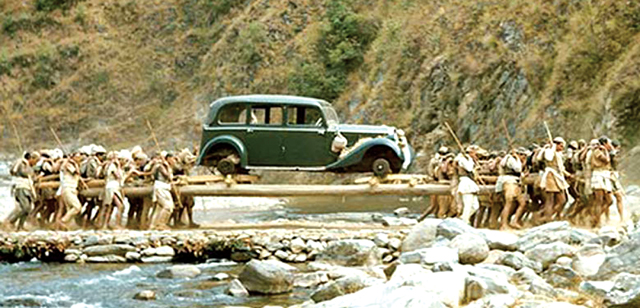
History of Car in Nepal
We frequently think of a black-and-white photograph of a car being carried on the shoulders of hundreds of porters when we think of the history of the car in Nepal. This automobile is supposed to have been delivered to Adolf Hitler as part of the pretext for the Second World War in 1939 AD. Tribhuvan, a wonderful man, drove this car around the streets of Kathmandu. The same automobile was kept at Thapathali Technical Campus after King Tribhuvan's death in 1955 for teaching and learning purposes. If we're lucky, we'll see this car in Kathmandu's shows and expositions. This isn't, however, the first automobile to arrive in Nepal.
According to a source, in 1922 AD, Prince Edward (later King Edward VIII) of the United Kingdom drove the first car across the Indian border into Nepal for wild hunting in Kasara, Chitawan. The general people, however, did not have the option to possess an automobile for the following 50 years after the first one arrived in Nepal. Purchasing a car was against the law at the time. It's been a century since the first automobile arrived in Nepal. Cars were offered as gifts or as rewards, but Chandra Samsher was the first to buy one. The Rana family and a Nepali scientist named Gehendra Samsher imported a Ford business vehicle on their own, according to author Tony Hegan. In 1939, German dictator Adolf Hitler offered Juddha Samsher and King Tribhuvan with two Mercedes Benz each in order to entice the Nepali Gurkha Army to join him in the world war.
Later, the Rana dynasty adopted the practice of purchasing automobiles to supplement their lavish lifestyle. King Mahendra purchased American Chrysler and Mercedes Benz automobiles as part of his royal carriage. People would have to move the car in a bamboo cart because there was no road connecting Terai and Kathmandu at the time. Hundreds of Balami and Tamang porters from Makwanpur district have a habit of transporting around four dozens of autos. They were all aimed to add to the wealth of the Shah and Rana families. The most prevalent car-carrying routes were Chitlang, Kushle Chaur, Markhu Pauwa, Kulekhani, and Phakhel. The porters came from the nearby areas as well. The cars were taken to Kalkota (then Calcutta) and then to Amlekhgunj. The potters would create a wagon and begin carrying the car after removing the tires from Bhimphedi, Makwanpur's then headquarters. The strong potters would take 2-3 days to reach Chunikhel, Thankot. The car would then be driven from Chunikhel to the palaces. Newaris with the surname Balami labored as porters for a long time before going on to become company owners and farmers. The Tamang community, on the other hand, continued to labor as porters. As a result, the Tamang people of Makwanpur are known as automobile transporters in history.
The porters were expected to transport the cars for free in exchange for their services. They did, however, finally receive a nominal wage from the chief porter, which was increased from 5 ana to Re. 1. The leading porter would collect an additional Re. 1 as a commission.
The King Tribhuvan's Mercedes Benz car can still be seen abandoned in the Pulchowk Engineering College scrapyard, but Prime Minister Chandra Samsher's car's whereabouts are unknown. Judhdha Samsher took his own automobile to India after abandoning the monarchy. As a result, his car is still parked on the highway in Dehradun. The Chhauni National Museum has King Mahendra's car on display. You may see some of the cars used by the Rana and Shah families at Nepal Motor Company in Lazimpat, Kathmandu, if you are a historian, researcher, or antique automobile enthusiast.



